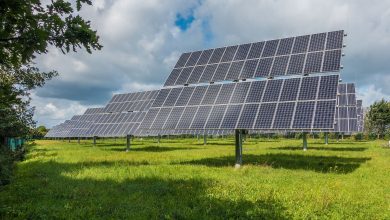What are the Differences Between Self Isolation and Social Distance?

Governments around the world advise people to use physical distance, also known as social distance and self-isolation, to slow the spread of coronavirus. However, there are some fundamental differences between these approaches. Coronavirus or SARS-CoV-2 causes a respiratory condition known as coronavirus disease 2019 (COVID-19).
Some studies estimate that after a point, approximately 50-60% of the population will be caught SARS-CoV-2. Most countries are implementing measures such as physical distance and self-isolation to slow the rate of transmission. This article contains information on the differences between self-isolation and physical distance, when they should be implemented, and the effects of these measures on personal and public health.
Language Matters When Talking about Social Distance
Although social distance means maintaining physical distance between oneself and others, it also requires maintaining an emotional distance. However, during the pandemic it is important for the person to stay in touch with their friends, family and community. Therefore, the term physical distance should be used instead of social distance. It is believed that a person can remain physically distant while maintaining and even strengthening their social connections.
What is Physical Distance?
Physical distance means that a person stays 6 feet or 2 meters away from individuals living outside the home. Physical distance aims to slow the spread of the virus by keeping people apart. SARS-CoV-2 is highly contagious. This means that it can spread easily from person to person, usually in droplets that are expelled when a person coughs or sneezes, and these droplets can also survive on hard surfaces. Physical distance means some things and these are as follows:
• Not attending big events such as sports games, music festivals or theater performances
• Not going to social gatherings such as parties or weddings
• Not meeting friends or family
• Not gathering in public places such as shopping malls, bars, restaurants or parks
• Staying at least 6 feet (2 meters) away from people who do not live in the same household
The World Health Organization (WHO) recommends that everyone physically distance themselves from people who cough or sneeze. Turkey, United Kingdom, France and many countries, including Italy, have always wanted to practice physical distance from all citizens. The CDC has recommended that people who are difficult to maintain physical distance wear a face mask in public places. This mask helps slow the spread of the virus from people who do not know that they are infected, including those who are asymptomatic. People should wear a face mask while maintaining physical distance.
What is Self Isolation?
Self-isolation aims to keep people who may have COVID-19 away from others, and this should prevent the spread of the virus. According to the Centers for Disease Control and Prevention (CDC), information from people who develop symptoms of self-isolating COVID-19 symptoms are as follows:
• Fire
• Cough
• Difficulty breathing
Self-isolation means staying home for 14 days unless emergency medical assistance is required, avoiding public transportation while seeking medical help, not accepting visitors, trying to stay in a separate room if there are other individuals at home, and asking for packages such as cargo to be left out. There are things to do in terms of hygiene during self-isolation and these are as follows:
• Staying in a well-ventilated room with an opening window
• Not using the same towels with people living in the same house
• Cleaning toilets and bathrooms regularly
• Washing cutlery and dishes thoroughly
Most people with COVID-19 experience symptoms that do not require specialist care. These symptoms are as follows:
• High fever
• New onset and persistent cough
• Shortness of breath
However, if a person develops any of some of the symptoms, they should seek emergency help immediately. These symptoms are as follows:
• Difficulty breathing
• Persistent pain in the chest
• Feeling of pressure in the chest
• Confusion, confusion
• purple lips
• A bluish face
What is Quarantine?
Anyone who has been exposed to SARS-CoV-2 or tested positive for the virus may need to go into quarantine. Being in quarantine means separating the person from others and restricting their movements, and this stops the spread of the disease.
How Can Physical Distance and Self-Isolation Affect Mental Health?
The infectious disease outbreak can cause anxiety, anxiety or fear. Many people are concerned about their own health and family. Having to take time off work can also cause financial concerns. Grocery shopping can be stressful during physical distance and very difficult during self-isolation. These cause some emotions and these are as follows:
• Loneliness
• Anger
• Boredom
• Frustration
• Anxiety
• Depression
Some tips for dealing with physical isolation are as follows:
• Staying up to date but trying to limit news coverage
• Seeking information from trusted sources such as the CDC and WHO
• Staying connected to friends and family using the internet
• Trying to stay active
• Trying to establish a structured daily routine
• Doing breathing exercises
• Practicing yoga or meditation
• Trying soothing activities such as taking a hot bath or reading a book
• Finding out what support is available from local authorities and nonprofit groups





